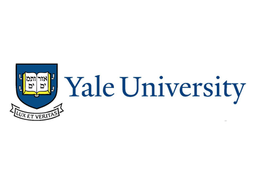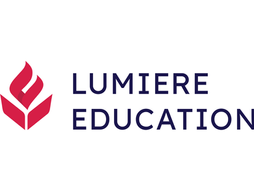Stanford's Middle School Scholars Program - 8 Reasons to Apply
High school is an important time in your education. You get to explore subjects you are interested in in-depth, sit for standardized tests, and think about what field you would like to pursue in college.
If you are a middle school student thinking about high school and college, you could benefit from a program that introduces you to subjects like mathematics, philosophy, political science, and political science, giving you a better idea of what you would study in the years ahead. Such programs, often conducted by leading universities, can be competitive. Being accepted would add value to your CV, distinguish yourself from your peers, and also provide opportunities for further programs with these institutions.
Here, we will discuss the Stanford Middle School Scholars Program (SMSSP), giving you our review of it and helping you decide whether to apply!
What is the Stanford Middle School Scholars Program all about?
Stanford University runs SMSSP for middle school students from low-income backgrounds. The program runs for three weeks in the summer and conducts after-school meetings in the fall. It is fully paid and online, and students accepted in the program can dive into sessions on political theory, philosophy, mathematics, history, and media, all taught by leading Stanford faculty.
Am I eligible for SMSSP?
The program is open to all middle school students in grades 6 and 7 from low-income households. Stanford defines low-income households as those that earn less than $90,000 annually. Additionally, Stanford expects students who apply to have a minimum B- grade.
What are the program dates?
For the 2024 program, the summer session runs from July 8 to July 24. Students attend live online classes from 9 a.m. to 12 p.m., Monday to Friday. The fall session runs from August 26 to December 13. During this, students meet weekly with their instructors after school for admissions-related workshops.
Applications for 2024 have closed. Admissions for 2025 will likely open in January and close by the end of March.
How much does the program cost?
Nothing! SMSSP is fully funded, and free of cost.
Is the program prestigious?
The program is competitive and moderately prestigious. Stanford’s summer programs have an acceptance rate that varies from 15-30%. SMSSP has a cohort size of 12 and is fully funded, which increases prestige and competitiveness. However, only a limited number of students who qualify as low-income can apply.
What is the program structure like?
The program has two sessions: summer and fall. In summer, students attend live online sessions from 9 a.m. to 12 p.m., Monday to Friday. The sessions are led by Stanford professors and cover the following topics:
Democracy and dissent: In this course, you will learn about famous philosophers, revolutionaries, and anti-establishment leaders who rebelled against established governance systems. The coursework includes Socrates’ philosophies on democracy and reading Martin Luther King Jr’s “Letter from a Birmingham Jail” to delve deeper into the civil rights movement in the U.S. You will use the material learned here to critically analyze the role of citizens in communities.
U.S. social movements through graphic novels: Here, as the course title suggests, graphic novels will be used to understand three important movements, namely the U.S. Civil Rights movement, the global women’s rights movement, and the climate movement. You will learn about the major flashpoints, important legislature passed, and gain a more holistic understanding of these movements. Coursework includes reading texts, class discussions, and writing assignments.
Media literacy in the post-truth era: Understand how social media algorithms influence how you consume news online and their effect on democratic institutions. Learn how to navigate and access trustworthy news sources, and differentiate between concepts like misinformation, disinformation, malinformation, and manipulated content. In this course, your final project will include selecting an event and analyzing how different news portals have reported on it.
Real-life applications to mathematics: Learn about the fundamental mathematical concepts implemented in cryptography and financial mathematics. Dive into codes like Caesar’s Cipher, Vigenere’s Cipher, and Public Key Encryption. Dive into financial mathematics and learn about the real cost of goods, compounding when investing, credit scores, and more.
Students can opt for any one of the above four courses. The fall session consists of weekly hour-long meetings with your assigned coordinator who conducts workshops on attending additional online programs.
Pros and cons of attending MSSP:
Pros:
You do not have to pay anything The program is aimed at students from low-income households and Stanford does not charge a tuition fee to attend.
You study relevant topics that will open up your mind The program curriculum includes courses on democracy, civil rights, and political theory, important movements in contemporary history, media literacy in the 21st century, and real-world applications of mathematics. Exploring these topics can help shape what you study in high school and beyond.
You can attend the program from the comfort of your home MSSP is 100% online. This includes the summer session, which has three-hour classes Monday to Friday, and the weekly meetings conducted during the fall session.
You have a higher chance of getting in if you come from a low-income household Stanford offers the program to students who come from families that have a mean annual household income of less than $90,000.
You do not need very high grades Stanford expects students to have a minimum B- grade and encourages students to apply, especially those who can prove an upward trajectory in their grades and show demonstrable interest in the program.
You get to learn from dedicated Stanford faculty Professors for this program are part of Stanford Online High School (OHS) and hold either a Master's or Ph.D. in their respective fields.
You receive training on how to apply to more programs The fall session of the program includes workshops on applying to more extracurricular programs, both in the Stanford OHS and outside. You receive counseling, writing and tutoring prep, and learn how to navigate admissions offices.
You can avail of technical equipment if you do not have one Once accepted into the program, you can ask Stanford to supply you with a computer, webcam, headphones, etc. in case you do not own them to help you participate in the online sessions.
Our review — what do we think of the program?
Stanford MSSP is a sound option for ambitious middle school students from low-income households who want to explore new topics and find a career path that interests them. The program is free, online, and you do not need high grades. Stanford even provides equipment for students who do not have easy access to a computer. Stanford OHS staff conduct the program and make the material engaging through class discussions, readings, and writing assignments. You can also avail of special workshops that help you apply to more OHS programs and other programs not affiliated with Stanford.
One more option - The Lumiere Junior Explorer Program
The Lumiere Junior Explorer Program is a program for middle school students to work one-on-one with a mentor to explore their academic interests and build a project they are passionate about. Our mentors are scholars from top research universities such as Harvard, MIT, Stanford, Yale, Duke and LSE.
The program was founded by a Harvard & Oxford PhD who met as undergraduates at Harvard. The program is rigorous and fully virtual. We offer need based financial aid for students who qualify. You can find the application in the brochure!
To learn more, you can reach out to our Head of Partnerships, Maya, at maya.novak-herzog@lumiere.education or go to our website.
Multiple rolling deadlines for JEP cohorts across the year, you can apply using this application link! If you'd like to take a look at the cohorts + deadlines for 2024, you can refer to this page!
Kieran Lobo is a freelance writer from India.








